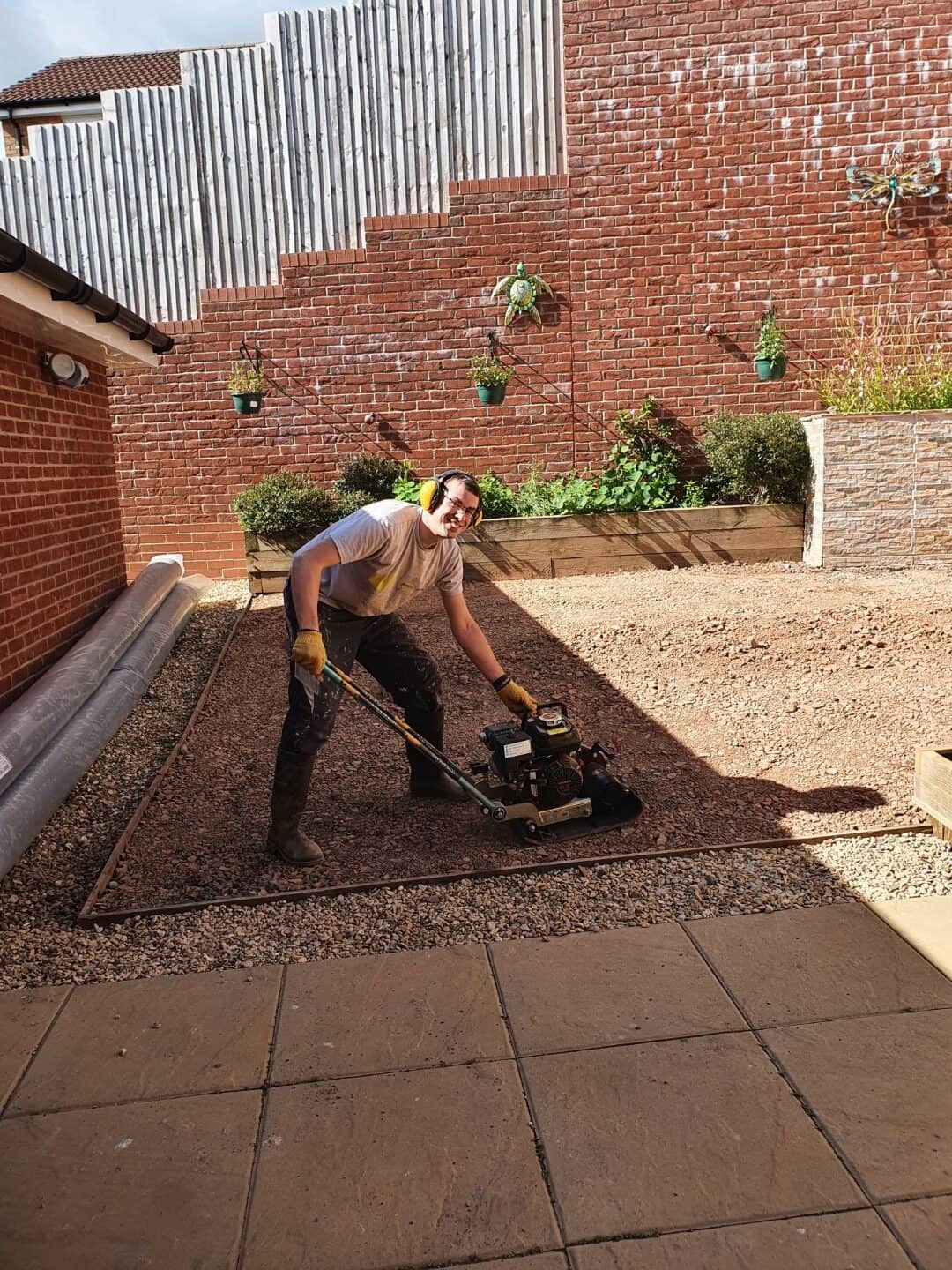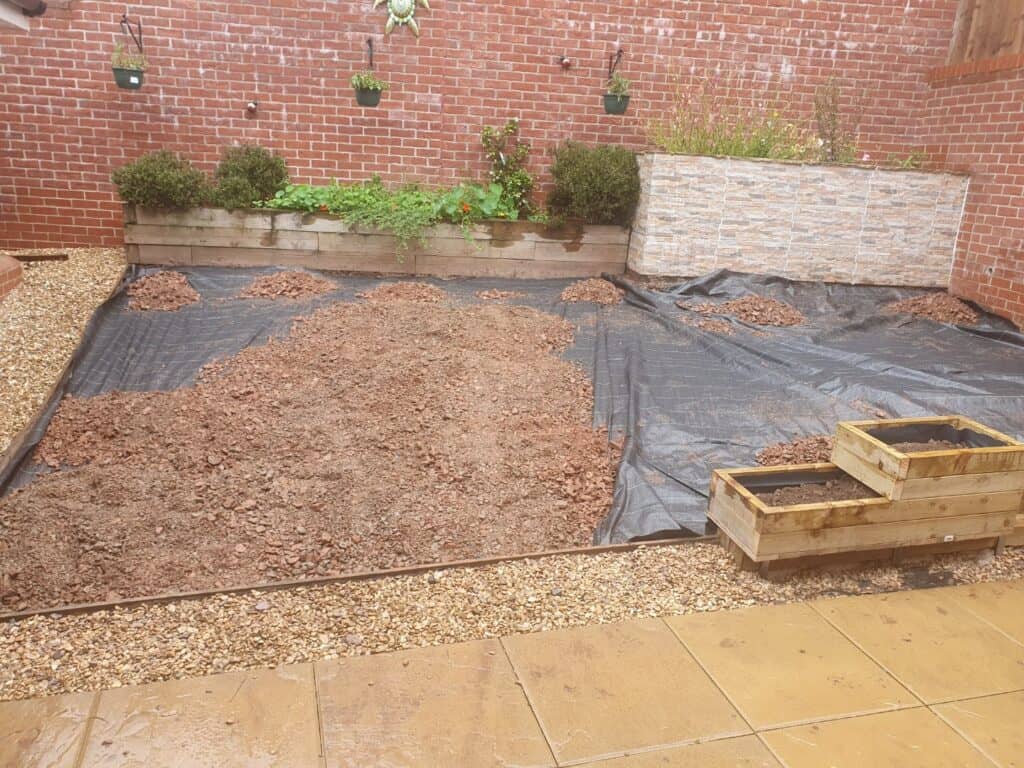Out of all the things you can improve in your house, curb appeal is one that stands out the most. For most DIY-ers, renovating your patio – or building one from scratch – is the pinnacle of their journey. When working on a patio or your curb, apart from material, one major consideration is that of the foundation.
The ground on which you lay the paver or your patio needs to be level and the dirt underneath should be compact. But a question arises; how to compact the ground? Do you really need a plate compactor for pavers and patios?
There are two ways to compact soil quickly and efficiently; a road roller (very expensive), or a DIY-er’s friend; a plate compactor. You don’t necessarily need it, there are other ways too, but do you need shoes before you leave the house?
Here, we’ll discuss the details about plate compactors to determine whether you need them or not.
How Does a Plate Compactor Work for Pavers & Patios?

Whether you’re making a patio or laying a new driveway, you need a compacted base that is fit for building a road over it. There’s a fairly simple test to check whether it’s compacted enough or not: hammering a chisel into the ground. There should only be minimal movement in the ground material – whether that’s soil, gravel or other sub-grade material.
Remember, if the ground isn’t compacted enough, you will end up developing cracks in your patio’s walls or over the pavers. But there is one issue here – you will have a relatively large area on hand to compress.
If you’ve used a fine and coarse gravel mix for the base, you can either wait (a long time) for it to self-settle, or use a plate compactor here. Think of a plate compactor for pavers and patios as a lawn mower, except instead of cutting the grass, they press the ground below to give you a level surface. And you can then stand on the ground without it shifting under your feet.
When you turn on the plate compactor, the plate attached below starts moving up and down with force (mostly due to the plate’s weight) to pack the dirt underneath. The increased alternative pressure means the soil grains underneath start to fill air gaps between each other, thus becoming sturdier.

Once the foundation is set, lay the sand bedding and repeat the process. You won’t have to spend as much time compacting the sand as you did with the gravel. The sand doesn’t need to be as compacted because you’re going to place your pavers on top of it.
Is a Plate Compactor Necessary Here?
As a DIY-er, you are naturally going to try and find an alternative method and so, we’re telling you that there are. There are some hand compactors out there as well which would fare well for small jobs, such as when landscaping and you need to only compress certain patches.
There are three main types of plate compactors that you can use for pavers and patios:
- Single-plate compactors
- Reversible-plate compactors
- Heavy-duty plate compactors
The thing about plate compactors is that they are much faster and more convenient to use. Much easier on the back as well. You don’t necessarily have to buy the plate compactor; renting it will suffice too. The same work that other tools would have taken days or weeks to complete, plate compactors can get done within hours due to the larger area the plate covers.
For larger jobs, there are more efficient tools, but would you be able to call in a road roller into your backyard without breaking anything? These are small and versatile pieces of machinery.
Where road rollers would pass over the same patch of dirt twice to get it ready for pavers and your patio, the plate compactor will need three to four passes. At the same time, hand pavers or other methods would take much, much longer.
In other words, if you have one of these on hand:

It will do the job very quickly – but it’s expensive to get these machines (even to hire), and you can’t always move them into a yard – they need a wide access point. So ‘settling’ for a plate compactor is often the smarter choice.
How Long Does Plate Compactor Take to Prepare Soil For Pavers & Patios
When preparing ground material – or sub-base – for pavers and patios, a good rule of thumb is to get more sub-base than you need. When you compact sub-base, it has a tendency to compact by up to 30%-35%. This should give you a good idea about how far you are from optimum compression.

Before you start compressing, here is a quick tip to give you a stencil of how far you need to go.
- Excavate dirt. Try to be as even with the excavation as possible. Go at least:
- 4-inches deep if you’re laying pavers on an area with only foot-traffic.
- 6-inches deep if you’re laying pavers on an area with heavy foot traffic.
- 6-8-inches for pavers where you are expecting cars or bikes.
- 8-10 inches for your patio.
- Add 2 inches to all of these measurements if you live in a cold or wet climate.
- Measure how much you excavated. Let’s assume you excavated 8 inches for your patio.
- Get enough sub-base material to fill the same area, but measure as if you dug up to 11-12 inches deep.
- Pour the initial material no more than 2 inches at a time, and turn on the plate compactor. Drive a rebar into the sub-base with a mark after every inch.
- Once that level is compacted, add more material and repeat the process.
Compress the sub-base by 30% for your pavers and patios. As mentioned above, with the plate compactor it should take you 2-3 passes for a mixture of fine and rough gravel. It may take a few more for other, coarser soils.
Another benefit that plate compactors offer is that after you’ve installed pavers, a single pass on top of them will help you level them out. Don’t overdo it, mind you. You might end up breaking them. A vibrating plate compactor is best for pavers and patio bases.
We hope this guide helped you understand the importance of a plate compactor and how it can help you make short work of an otherwise lengthy process.
FAQS
Q: Can I rent a plate compactor?
A: Yes, you can rent a plate compactor from equipment rental stores. Renting is a cost-effective option if you only have a small project or occasional need for the machine.
Q: Do I need a plate compactor for a small paver project?
A: Yes, even for small paver projects, it is recommended to use a plate compactor. It ensures a uniform and solid base, reducing the chances of paver movement and settling.
Q: What is the size of the plate compactor I need?
A: The size of the plate compactor you need depends on the size of your project. For smaller projects, a compact and lightweight plate compactor will suffice. For larger projects, a larger plate size may be required.
Q: Can I use a hand tamper instead of a plate compactor?
A: While it is possible to use a hand tamper, it is more labor-intensive and time-consuming compared to using a plate compactor. The vibrations of the plate compactor provide better compaction and efficiency.
Q: How do I protect my pavers when using a plate compactor?
A: To protect your pavers when using a plate compactor, place a flat steel plate or a rubber mat between the compactor and the pavers. This helps to distribute the vibrations of the plate compactor and prevents direct contact with the pavers.
